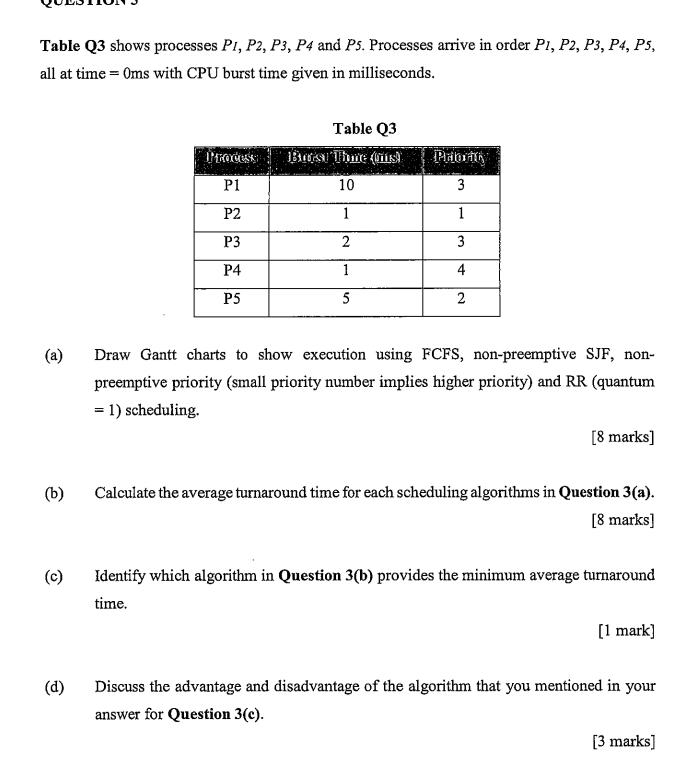Answered step by step
Verified Expert Solution
Question
1 Approved Answer
Table Q3 shows processes P1, P2, P3, P4 and P5. Processes arrive in order P1, P2, P3, P4, P5, all at time = Oms

Table Q3 shows processes P1, P2, P3, P4 and P5. Processes arrive in order P1, P2, P3, P4, P5, all at time = Oms with CPU burst time given in milliseconds. (a) Table Q3 Process Burst Time (ts) Priority Pl 10 3 P2 1 1 P3 2 3 P4 1 4 P5 5 2 Draw Gantt charts to show execution using FCFS, non-preemptive SJF, non- preemptive priority (small priority number implies higher priority) and RR (quantum = 1) scheduling. [8 marks] (b) Calculate the average turnaround time for each scheduling algorithms in Question 3(a). (c) (d) [8 marks] Identify which algorithm in Question 3(b) provides the minimum average turnaround time. [1 mark] Discuss the advantage and disadvantage of the algorithm that you mentioned in your answer for Question 3(c). [3 marks]
Step by Step Solution
There are 3 Steps involved in it
Step: 1

Get Instant Access to Expert-Tailored Solutions
See step-by-step solutions with expert insights and AI powered tools for academic success
Step: 2

Step: 3

Ace Your Homework with AI
Get the answers you need in no time with our AI-driven, step-by-step assistance
Get Started


